[Click on BLUE links for sources and information}
Minimalism has been a fascination since the beginning of time, the simple life as an anecdote to the hunger for wealth and fame. Jennifer Michael Hecht tells a story about the great cynic Diogenes that dates from around 336 B.C.
We have that great story about him [Diogenes] and Alexander the Great where Alexander the Great has heard of this impressive philosopher and comes to him and says, you know, “What can I give you? I’ll give you any gift,” which was both a sort of tease, because if you gave him a great deal of money, of course, he’s seduced the cynic away from cynical life. And Diogenes says, “Yeah, I can think of something you can do for me. Could you step out of my sun?” You know, he was blocking his sunlight. And Alexander the Great once said, were he not Alexander, he would be Diogenes. Because these are two men who both had a tremendous amount of ambition, and one dealt with it by going out and conquering the world and the other by conquering his own ambition. Jennifer Michael Hecht on Speaking of Faith
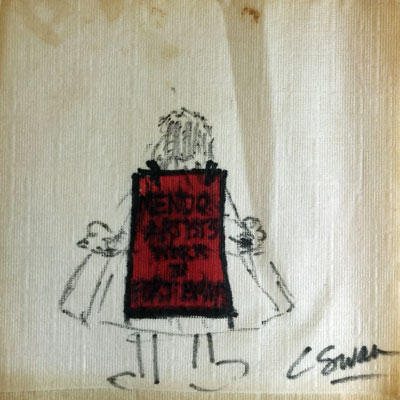
Sea Gull Cellar Bar Napkin Art, Cindy Swan artist
Consider this six-word story attributed (without corroboration) to Hemingway:
For sale: Baby shoes never worn.
Any number of scenarios might be created from those six words but the words themselves are all that is needed. The reader’s mind does the rest. The human brain has evolved to make up stories from the least of facts. A good artist provides no more than what’s needed.
There is a popular legend that pits teacher against student with the student coming out on top. The teacher sets up a complicated story scenario. One student achieves success with a dozen words.
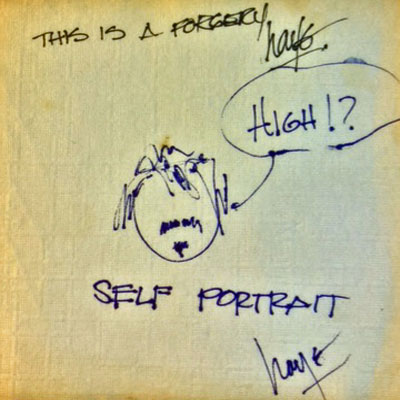
Sea Gull Cellar Bar Napkin Art, Jack Haye artist
A university creative writing class was asked to write a concise essay containing the following elements:
- Religion
- Royalty
- Sex
- Mystery
The prize-winning essay read:
‘My God,” said the Queen, “I’m pregnant. I wonder who did it!”
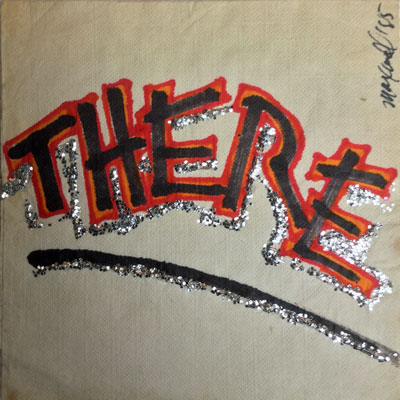
Sea Gull Cellar Bar Napkin Art, James Maxwell artist
Such less-is-more examples are endless. George Saunders humorously describes how artists make use of one such minimalist editing technique:
What does an artist do, mostly? She tweaks that which she’s already done. There are those moments when we sit before a blank page, but mostly we’re adjusting that which is already there. The writer revises, the painter touches up, the director edits, the musician overdubs. I write, “Jane came into the room and sat down on the blue couch,” read that, wince, cross out “came into the room” and “down” and “blue” (Why does she have to come into the room? Can someone sit UP on a couch? Why do we care if it’s blue?) and the sentence becomes “Jane sat on the couch – ” and suddenly, it’s better (Hemingwayesque, even!), although … why is it meaningful for Jane to sit on a couch? Do we really need that? And soon we have arrived, simply, at “Jane”, which at least doesn’t suck, and has the virtue of brevity.
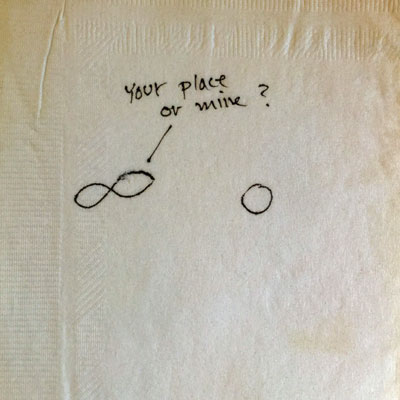
Sea Gull Cellar Bar Napkin Art, artist unknown
There are limits to minimalism and there is a downside (think anorexia). In a review of Waiting for Godot, Siobhan Bohnacker writes:
As Beckett once said, “All true grace is in the economical.” “Godot” is economical in form and in language, as well as in aesthetic. Yet Beckett’s reductionist approach can only go so far. “You can’t present a blank canvas,” said Lewis. “Everything that you do as an artist will have a specific quality to it, because you interpret through your taste, your experience, and your way of looking at the world. Then you can ask yourself, ‘Is that O.K., Mr. Beckett?’ ”
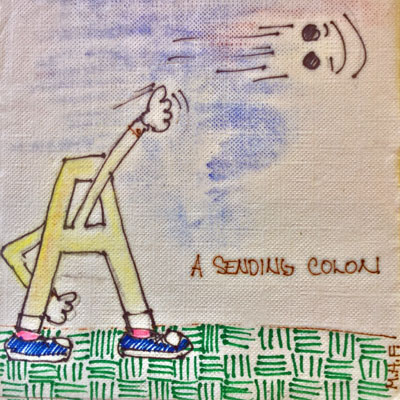
Sea Gull Cellar Bar Napkin Art, Michael Fischer artist
While the “reductionist approach can only go so far,” it could be far enough to explain everything around us. According to Jim Holt (Why Does the World Exist), the universe itself may be a minimalist construct, a random quantum fluctuation created out of (almost) nothing.
Okay, so what’s the point? The point, and I always have a point, is that the Sea Gull Cellar Bar Napkin Artists were brilliant minimalists. TITM adds new napkins every day to our Napkin Art Gallery. Spend some time enjoying them. You might find to your delight that less truly can be more.
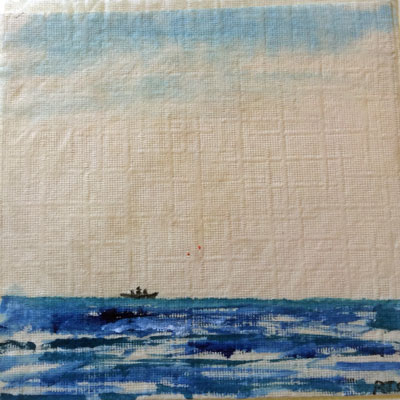
Sea Gull Cellar Bar Napkin Art, Bob Seaver artist
I will end with a mix of verses (48, 8, 3) drawn from Lao Tzu’s Tao Te Ching, the second most translated book in the world. [Hat tip to Harpreet Sandhu] Lao Tzu predates even the great Diogenes with whom we started this post.
Less is More
Compiled from Lao Tzu’s Way of Life
“In the pursuit of knowledge,
every day something is added.
In the practice of the Tao,
every day something is dropped.
Less and less do you need to force things,
until finally you arrive at non-action.
When nothing is done,
nothing is left undone.”
“The supreme good is like water,
which nourishes all things without trying to.
It is content with the low places that people disdain.
Thus it is like the Tao.”
“The Master
acts without doing anything
and teaches without saying anything.
Things arise and she lets them come;
things disappear and she lets them go.
She has but doesn’t possess,
acts but doesn’t expect.
When her work is done, she forgets it.
This is why it lasts forever.”
“Practice not-doing,
and everything will fall into place.”

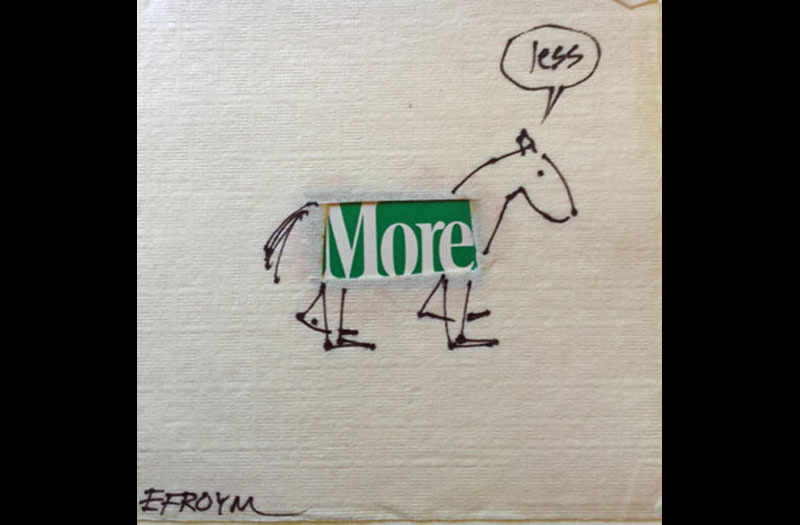
O
K
Dokey